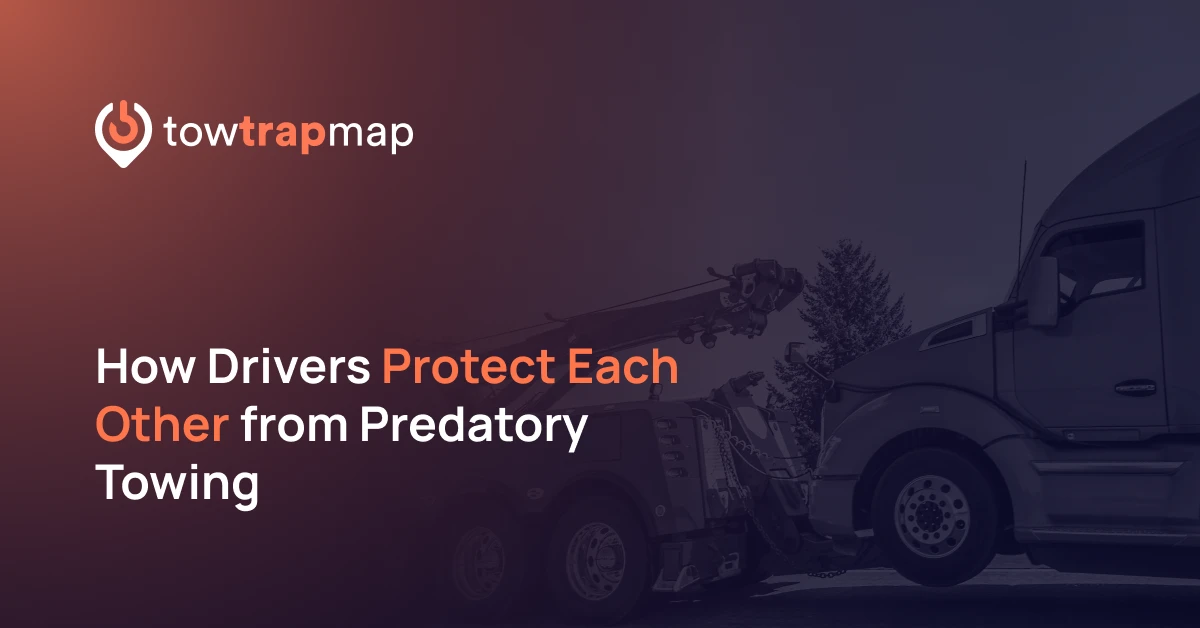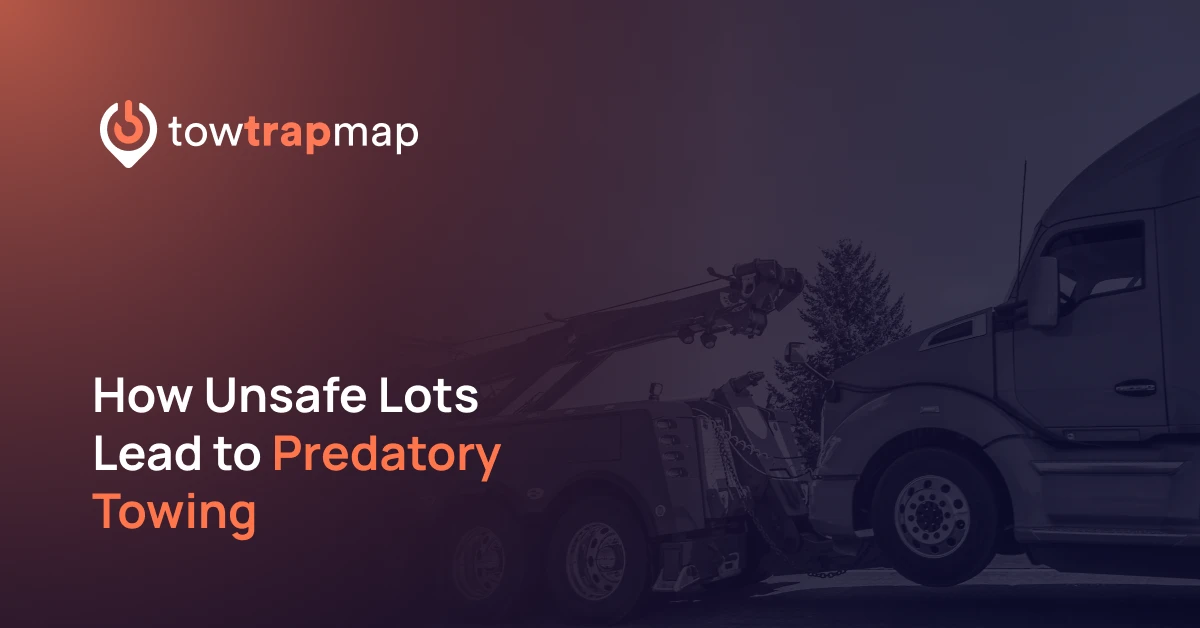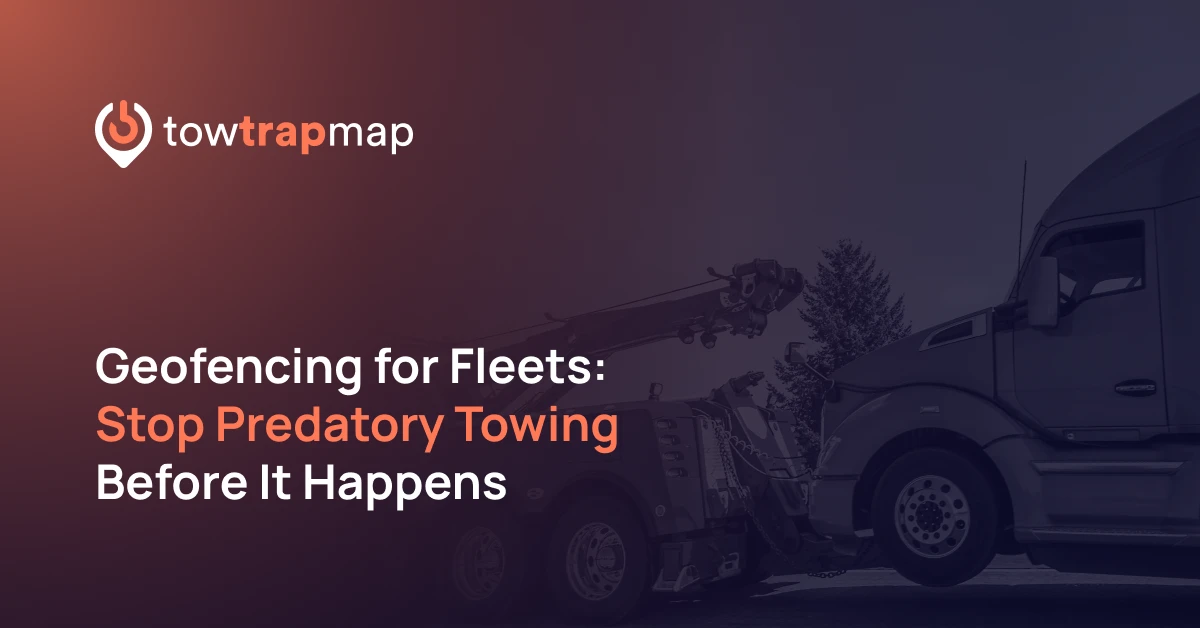Why Crowdsourced Towing Reports Matter
Predatory towing thrives on drivers being isolated. A single trucker parks in what looks like a safe lot, only to find their rig booted or towed away hours later with a bill for thousands. Without a way to share that experience, the next driver rolls into the same spot and faces the same trap.
Crowdsourced towing reports are a way to break that cycle. When one driver speaks up, dozens of others can avoid the same problem. Over time, those individual reports add up to a living database that exposes bad actors and helps drivers make safer choices.
This isn’t just about saving money — it’s about protecting drivers’ time, their safety, and their peace of mind.
How Crowdsourced Towing Reports Work
TowTrapMap was built to make sharing easy and reliable. Instead of relying on word of mouth, scattered Facebook posts, or forum threads, the platform turns reports into structured data that fleets and drivers can act on.
Step 1 – Drivers or Fleets Submit a Report
Any driver, dispatcher, or fleet manager can visit towtrapmap.com/report. The form asks for simple but important details: where the incident happened, what occurred, and any photos that prove the setup was unfair. Even a short description can be enough to mark a hotspot.
Step 2 – Moderation & Verification
Not every complaint is predatory, which is why reports go through moderation. This ensures that what gets published on the map is accurate, credible, and useful. Drivers don’t want noise—they want a reliable warning system.
Step 3 – Pins & Geofences on the Map
Once verified, the location appears as a pin on the TowTrapMap. In high-risk zones, admins can also draw geofences around the area. These aren’t just visual boundaries—they’re digital zones that fleets can later import into telematics platforms like Samsara, Motive, or Geotab.
Step 4 – Alerts to Protect Drivers
The real value comes when these zones trigger alerts. A driver approaching a risky lot can receive a warning before entering, giving them time to reroute and avoid a potential tow.
The Network Effect: Every Report Adds Value
The strength of crowdsourcing lies in numbers. One driver’s report may help a handful of others. Dozens of reports start to reveal patterns—certain cities, certain lots, certain companies that repeatedly show up. Hundreds of reports transform the landscape, building a map that makes it harder for predatory towing to remain hidden.
Each report is a small act of protection, but together they create a shield for the entire trucking community. The more drivers who participate, the more accurate and powerful the map becomes. It’s a network effect that grows stronger with every submission.
Real-World Impact
This isn’t just theory—it’s already working. In testing with a mid-sized fleet in Illinois, TowTrapMap generated three separate alerts in a single week. Each alert helped a driver avoid a known trap, saving the fleet over $5,000 in towing and storage fees.
That money would have otherwise gone to inflated invoices, downtime, and frustrated drivers. Instead, the fleet kept moving, deliveries stayed on time, and drivers avoided a stressful ordeal. It’s a glimpse of what’s possible when data is shared and acted upon.
How You Can Contribute
Predatory towing thrives in the dark. The best way to fight back is to shine a light on it—and that starts with drivers taking a few minutes to report what they see.
If you’ve ever been hit by unclear signage, surprise booting fees, or aggressive tow trucks circling a lot, your experience could prevent someone else from going through the same.
For fleets, encouraging drivers to submit reports builds a protective layer across your routes. Each pin added to the map is one more safeguard for your trucks and your bottom line.
👉 Report a Tow Trap — it only takes a few minutes, and the impact can be enormous.
The Future of Crowdsourced Protection
Right now, the map is growing one report at a time. But the future is even more powerful. With enough data, TowTrapMap can highlight high-risk regions, provide predictive insights, and even identify towing companies that repeatedly appear in driver complaints.
As the database expands, it won’t just mark danger zones—it will also highlight safe parking areas and trusted service providers. Fleets will gain both a warning system and a guide to safer operations.
Conclusion
Predatory towing isn’t going away on its own. But drivers aren’t powerless. By sharing their experiences, they can build a community-driven map that takes the surprise—and the profit—out of tow traps.
TowTrapMap is based on one simple principle: every report protects the next driver. Whether you’re an owner-operator, a dispatcher, or a fleet manager, your contribution strengthens the shield for everyone.
👉 Take 2 minutes today to add your report: towtrapmap.com/report. Together, we can make the roads safer and the industry fairer.



